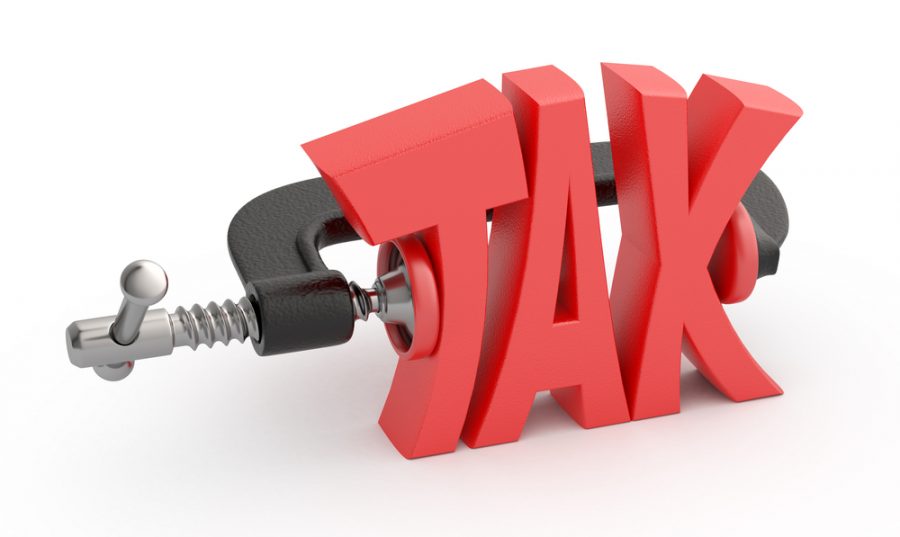I saw a particularly disturbing case of portfolio tax inefficiency this year and I wanted to write about it. Tax inefficiency is typically a slow-moving train, costing it’s victims thousands, or tens of thousands, over the lifetime of the tax inefficient portfolio. This case cost more than $5,000 on their 2018 tax bill alone. With more to come.
First some context and background information. Redeployment Wealth Strategies specializes in financial planning for military and veteran families. We do this because Sean and I both had military careers and the accompanying experience navigating the minefield of poor advice and distractions blocking the route to financial success. Among those sources of poor advice are the financial firms encouraging military families to focus on things beyond their control with respect to portfolio management. Despite a mountain of academic research demonstrating the most reliable indicators of portfolio growth are asset allocation, expenses, and tax efficiency, there remain some advisors who disregard these controllable aspects of client portfolios in favor of attempting to pick securities that will deliver out-sized performance. In short, they are trying to beat the market. The bad results are two-fold: They rarely succeed in delivering those out-sized returns, and when they do the tax inefficiency of the portfolio means the IRS gets that extra money, not the client.
I see this tax inefficiency every year. I am an Enrolled Agent, and we operate a tax firm separately from Redeployment Wealth Strategies. By the time the October 15 extension deadline passes I expect to have prepared more than 300 tax returns in 2019. I see tax inefficiency scattered here and there throughout tax client returns, but one 2018 return stands out in my mind because the $5,000 tax hit this family took was a direct result of the inefficiency of their portfolio. Let me walk you through how that happens.
‘Steve’ is a retired military officer who has his portfolio managed by a financial services firm that actively targets military families as clients. They also tout a form of active portfolio management in which they select a slate of 20 to 30 mutual funds and ETFs for the client portfolio. Every year they churn some part of the portfolio. They sell some of the funds and buy some others. I literally have dozens of tax clients using this company’s active management scheme, so I see the documents every year.
Before I dive into the tax inefficiency of this scheme, let me point out another issue I have with this method of portfolio management. If you own two dozen mutual funds, chances are quite high that you own the entire stock market. If you took all the individual stocks contained in all those mutual funds (and ETFs) and added them up, you would likely own nearly all the stocks in the market in proportion to their market weights. Or at least sufficiently close to it that the returns of the portfolio would be indistinguishable from the returns of the entire market. While RWS generally prefers this broadly diverse allocation, in these portfolios it is openly contrary to the stated objective of active portfolio management. Owning the entire market bodes ill for outperforming the market. In short, you are closet-indexing at an inflated price.
Back to tax efficiency and why it matters. Steve was advised by his current financial adviser to put just enough into the retirement plan where he works to get the matching money from his employer. This is the ‘no-brainer’ move for retirement saving – get the free money from your employer. Steve’s adviser then recommended he invest another $10,000 each year in an account with the adviser’s firm. (The very same type of account I described above.) Steve earns too much to deduct IRA contributions, so this money was placed into an account with no additional tax advantages. Steve has been investing with this advising firm for a couple of decades, so he has accumulated a six-figure balance in his portfolio.
In 2018 Steve’s adviser decided to sell some of the securities in his portfolio and reinvest them in some different funds. 2016 and 2017 were good years for the markets, so some of the securities that were sold had appreciated in value since they were purchased. This caused Steve to realize $9,300 of capital gains income. When added to his salary and military pension, Steve’s adjusted gross income (AGI) was just north of $178,500 in 2018. Steve has a child in college. In terms of spending for higher education Steve qualified for a $2,500 American Opportunity Tax Credit (AOTC). Unfortunately for Steve, the ability to claim the AOTC is tied to income. Due to his AGI Steve can only claim $180 of the possible $2,500 for AOTC. All told, Steve’s tax bill for 2018 was $24,534.
Let’s pretend we can turn back the hands of time and make two tweaks to improve the tax efficiency of Steve’s portfolio.
1) Let’s invest the extra $10,000 into the company 401K instead of the account with no tax advantages. By using the traditional 401K, Steve receives an income tax deduction for the money contributed to the account. He could contribute more than $10,000 (the limit was $19,000 in 2018), but we will leave it at the same $10,000 he contributed to his managed account with no tax advantages.
2) Let’s manage that external account in such a way that it doesn’t generate $9,300 of capital gains income in 2018. This is remarkably easy, especially if your portfolio essentially mirrors the broader market. You just buy and hold the broader market indices. There’s no need to generate capital gains by turning over part of your portfolio. Steve’s $9,300 was all reinvested anyway, so let’s just leave it invested in a market index.
By doing just those two things, Steve’s 2018 AGI falls to just over $159K. He is now being taxed on significantly less money. He also now qualifies for the entire AOTC of $2,500. His overall tax bill would be just over $19,500 – a tax savings of more than $5,000. He would have saved an additional $300+ on his Virginia taxes as well. Incorporating a little bit of tax efficiency into his investment advice could have put more than $5,300 back into Steve’s pockets.
This article is not investment advice. I have not described a blanket strategy for everyone. It is specific to Steve’s situation in 2018. He is at a point in his life, career, and household income level where investing in his traditional 401K is more tax efficient than the track his current advisor is recommending. This is not universally true, though. It might be more beneficial for you to pursue another strategy. A tax strategy that will likely change over the course of your financial life.
If you would like investment advice that incorporates tax efficiency tailored to your life, give us a call at (757) 752-8055. We’d love the opportunity to talk to you about it.

